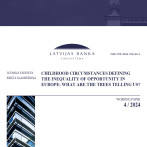Retail turnover continues growing for a third consecutive month
After two months of growth, retail turnover continued increasing also in August. Month-on-month, it grew 1.0% (seasonal factors excluded). Year-on-year, growth of 10.0% was retained and it should be evaluated as high, because growth continued despite the high base effect. We can thus expect a positive growth in the third quarter laying a good foundation for a positive growth of gross domestic product as well.
The trend was continued of a more dynamic growth in the non-food goods sector compared to the food goods one: the non-foods goods turnover in August increased by 1.6%, whereas the turnover in the food goods dropped 1.7%. The retail turnover in automotive fuel increased 4.3%. In the non-foods sector, the rate of retail growth was highest in furniture, lighting fixtures and other household items (+5.2%) as well as textiles, wearing apparel, footwear and leather items (+6.4%). The trade turnover of automobiles and motorcycles meanwhile dropped by 8.5%.
Even though the retail trade and consumer confidence indicators aggregated by the European Commission are still relatively stable, such consistently high growth seems surprising. First, even though the latest data on the average salary point to a growth in real purchasing power, it is still relatively small and substantially slower than retail growth. Second, the loan statistics do not indicate a substantial increase: the stock amount of loans to households continues to drop. Third, even though it was a good season for tourism, interviews with representatives of the branch suggest that it did not really top last year’s.
This gives rise to the question: what factors are behind the growth in retail turnover? In all likelihood, retail growth is related to improved overall confidence regarding the current and future development as well as individual financial health. The confidence in economic stability and own finances results in smaller savings or even spending the ones already in place. It is understandable as in the post-crisis period many households postponed purchases of various household items and automobiles as well as work on home improvement. The current improved confidence gives rise to the so-called delayed consumption effect: consumers spend money on items whose purchase was previously delayed. The European Commission’s survey on consumer confidence likewise point to a more positive attitude of consumers regarding the possibility of making bigger purchases (an automobile, real estate or home improvement).
We also see a gradual revival of the construction market (albeit it mostly involves infrastructure work, there is more construction going on in the housing and public building sector), which results in additional retail turnover (furniture, household objects, in some cases, also construction materials and instruments).
Moreover, one should take into account the effects of gradually diminishing shadow economy, which was discussed previously.
Retail growth is sustainable if it takes place in conjunction with the dynamics of the real wage bill, hence, if retail turnover is indeed growing on account of postponed consumption and reduced savings, it can be expected to slow down at some point and closer match the growth of real salary fund in the economy. The rate of retail turnover growth can also drop because of a switch in confidence: i.e. worry about further economic development.
The situation in both the European and global economies is still dangerous and should it begin to affect consumer confidence in Latvia, then the rate of retail turnover growth may slow down.
Textual error
«… …»






